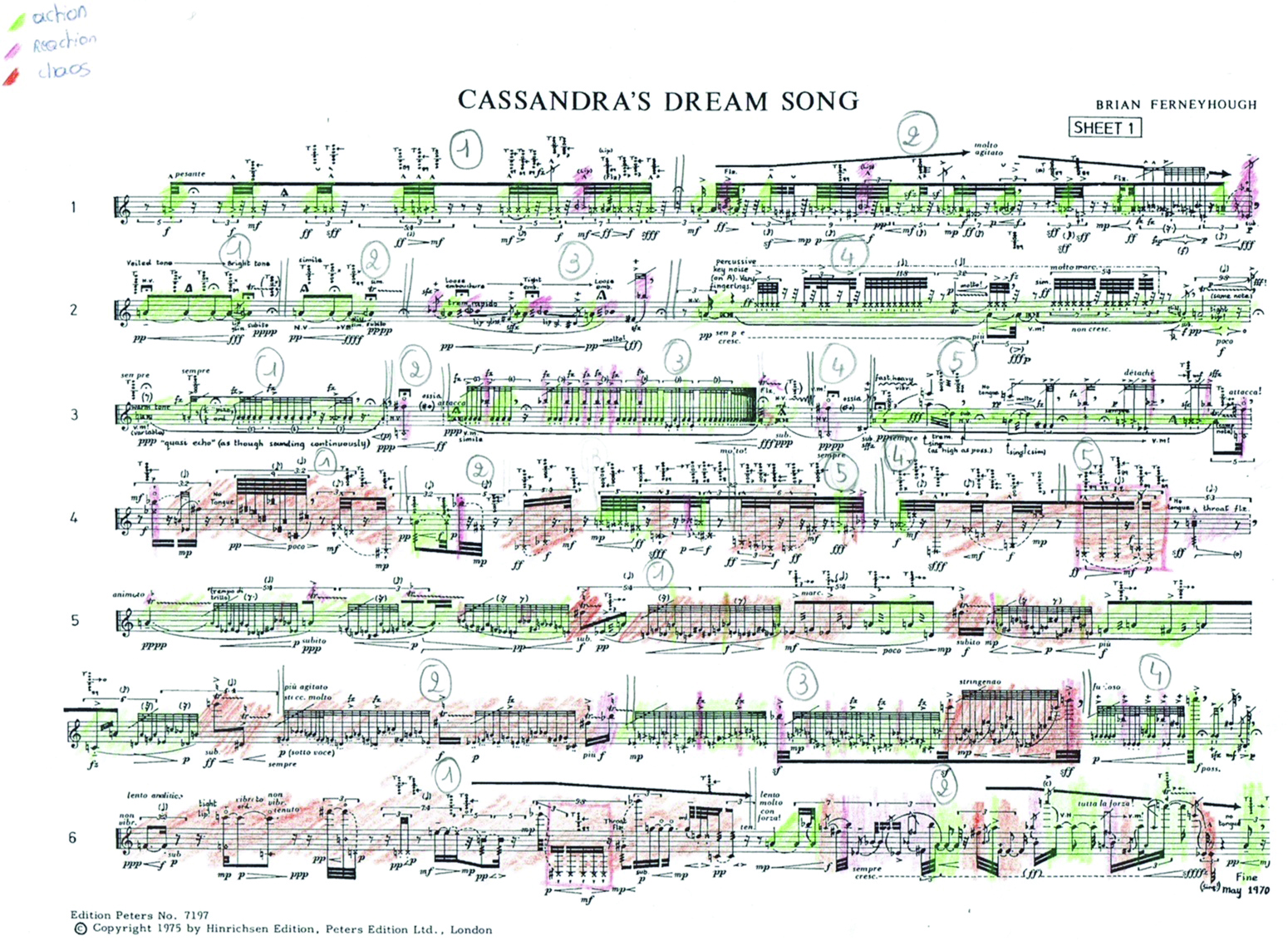

Brian Ferneyhough's Cassandra's Dream Song (1970) and its subsequent interpretations offer a fascinating case study in how classical mythological figures continue to function as potent vehicles for exploring contemporary concerns. By invoking Cassandra—the Trojan princess whose true prophecies were doomed to be disbelieved—the composition creates a multilayered reflection on communication, truth, and the limitations of human understanding.
The controversy surrounding gendered interpretations of the piece demonstrates how mythological references serve as cultural battlegrounds where competing values and perspectives contend for interpretive authority. Traditional readings that emphasised stereotypical female suffering collided with contemporary psychological approaches that sought to explore the complexity of Cassandra's inner conflict and prophetic burden. This interpretive evolution reflects broader societal shifts in understanding gender and psychological experience.
Particularly significant is flutist Ine Vanoeveren's "restyling" of the work, which reimagines it through a contemporary psychological lens. This approach exemplifies how mythological figures maintain relevance through continuous reinterpretation—each generation finds new meaning in ancient archetypes by applying current frameworks of understanding. Vanoeveren's approach demonstrates how performers themselves participate in mythological evolution, bringing new perspectives to established narratives.
The intersection of complexity music and psychological themes in this composition reveals how contemporary artistic practices often serve functions similar to traditional mythology—creating frameworks for exploring aspects of experience that resist simple articulation. By evoking Cassandra's tragic position, Ferneyhough's work addresses fundamental human concerns about knowledge, belief, and communication that transcend specific historical contexts. The ongoing reinterpretation of this piece demonstrates how mythological references continue to provide flexible frameworks for examining evolving cultural concerns.
𝌇 READ: "Cassandra's Dream Song", Forum Online.
↑ ▢ "The Irish Famine, Scene at the Gate of the Workhouse", from Ridpath's History of the World, Image sourced from Ridpath's History of the World; Source: Wikimedia Commons/Public Domain.
Copyright: Source materials belong to the public domain sources they originate from. See source site links for full rights and usage details. Materials shared on this site are used in accordance with Public Domain, Creative Commons, Open Access licenses, or applicable Fair Use principles. All rights remain with the original creators.
Copyright: Source materials belong to the public domain sources they originate from. See source site links for full rights and usage details. Materials shared on this site are used in accordance with Public Domain, Creative Commons, Open Access licenses, or applicable Fair Use principles. All rights remain with the original creators.